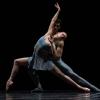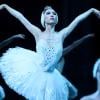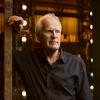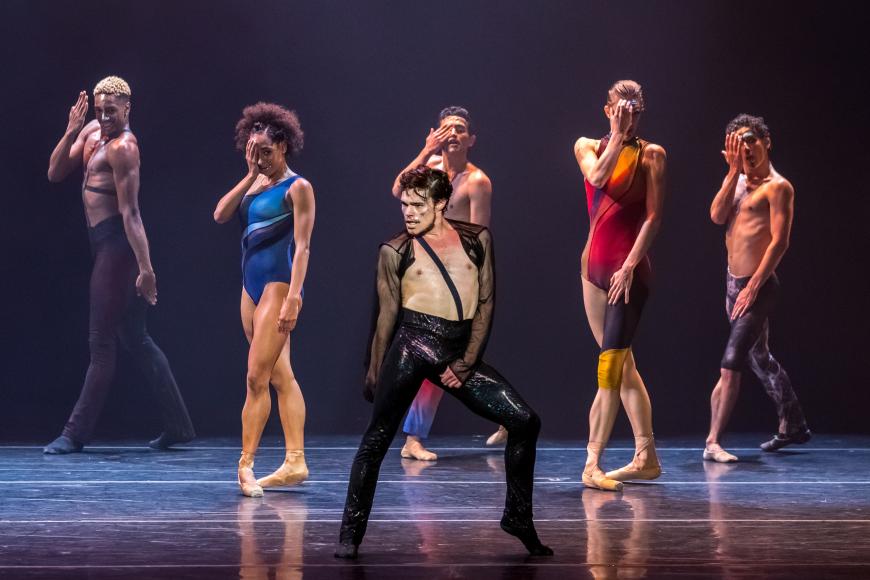
Rarely seen in these parts, Complexions Contemporary Ballet, founded in 1994 and still led by the distinguished Alvin Ailey alumni Dwight Rhoden and Desmond Richardson, played Stanford University’s Frost Amphitheater Wednesday, Aug. 3, for one night only as part of Stanford Live’s “Starry Nights” series. Complexions’ appearance, under the auspices of Stanford and San Francisco Ballet, was followed by a two-night SF Ballet mixed bill. This is unusual, generous, and most welcome, especially given both troupes’ pandemic challenges.
The New York-based Complexions performed “From Bach to Bowie,” incorporating Principal Choreographer Rhoden’s 2018 Bach 25, set to music from Johann Sebastian and Carl Philipp Emanuel, and his 2016 Star Dust, set to the singular Ziggy Stardust — or, to the unlettered, David Bowie. The evening offered a study in contrasts, the through line being the gorgeously supple dancers and the energy wrought onstage in two pieces whose music, of course, could not be more disparate.
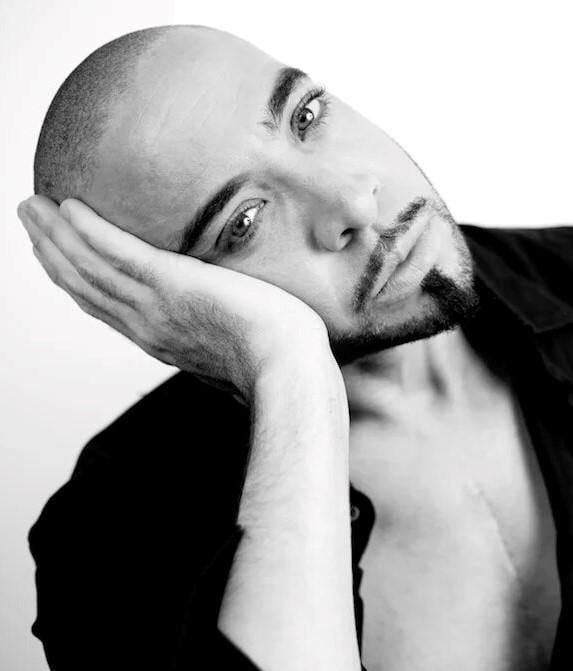
Watching the first, or Bach, portion, it soon became apparent that Rhoden’s strong choreographic suit is dynamism, and his weak one is extended choreographic development. It was a lot like seeing a tennis game of nothing but service aces without volleys, glories without payoffs. There was little in the way of sequenced choreography. What was on view were splendors of leaping, arabesque-ing, fiercely declarative échappés, sliding splits, fabulous spins, and a weird, close, and hyperextended pairing of perhaps the troupe’s tallest male with the shortest female. Artistry and awe-inspiring endurance were often undone by athleticism for its own sake. Too, little flourishes and fillips like shivery, extended hands seemed tacked on, like wrist ruffles. And two of the Bach arrangements, presumably contemporary, were done violence, one by a tin-eared dopey pizzicato, the other by a mindlessly pop-musical intrusion into a chorale, during which the dancers bobbed their hands as if seeking the strings on their yo-yos. The whole affair ended with a male dancer being hoisted aloft as the rest of the company reached toward him in a stagey, Ailey-esque moment of triumph, choreographically a point unearned.
After intermission came Star Dust, one of the most delightful rock opera pieces in memory. Choreographer Rhoden was on fire. The difference between the two parts of the show? Nearly a dozen of Bowie’s greatest hits (including “Life on Mars,” “Changes,” “Space Oddity,” “1984,” and “Modern Love”) as originally written and superb sound, at least from halfway back in Frost. We could churlishly say that it would be impossible to blow it, but gee, look what happened to those other two classicists, the Bachs. Anyway, Star Dust followed a system, had an order, was infused with the culture and spirit of its time, didn’t take itself too seriously, and honored Bowie’s genius and lyrics and music, gone too soon. Besides, there were some guys on pointe, and they moved divinely.
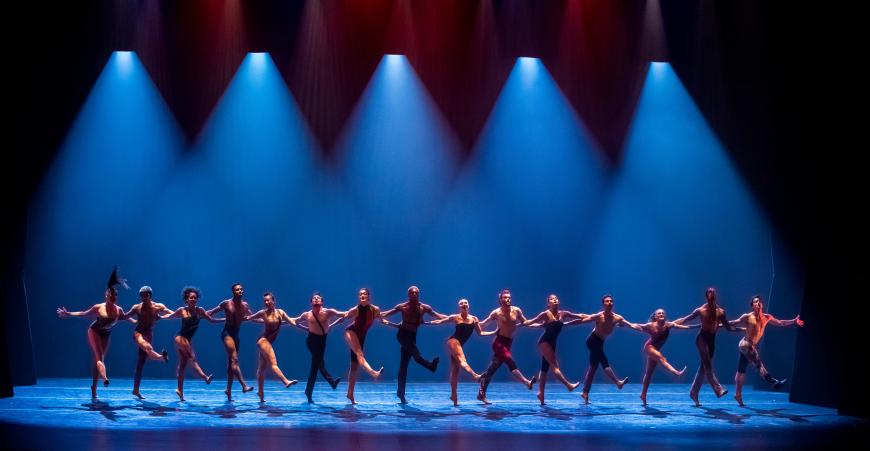
The format: Each song was led by a lip-synching David Bowie, made up and gorgeously, spangling-ly costumed by Christine Darch. Each Bowie was his own man, strutting and projecting and charming the crowd to beat the band. All that and dancing, too.
The company was in its own glittery attire. The 17 dancers, plus two apprentices, come from many ethnicities and yes, complexions, and nigh-infinite trainings, ballet to modern to jazz, tap, and folk. Many (about half) are in their first year with the company, founding co-artistic director and legendary dancer Desmond Richardson told me the other night. The absolute miracle is the unison of the troupe’s ensemble work and the uniform beauty of their technique. They are not cast in cookie-cutter fashion; they’re tall, short, medium. There seem to be no weak links. Star Dust put their musicality on superb display because each song was an infectious dance, or a series of dances. Striking a pose is part of the whole aesthetic, and the poses embodied jumping-off points for yet more vivacious Rhoden choreography. Splashy spins, naughty shimmies from the few ladies on pointe, daring leaps, infectious springing, promenades in stunning arabesques, and, in the finale, a jolly kickline aglow in Michael Korsch’s welcoming lighting.
Kudos to the Bowies: Brandon Gray, Jacopo Calvo, Thomas Dilley, Serafin Castro, Tim Stickney, Miguel Solano, and Joe Gonzalez. Extra cheers to Jillian Davis, Tatiana Melendez, and the rest of the Complexions women, who merit more equal exposure in the limelight than this program afforded.
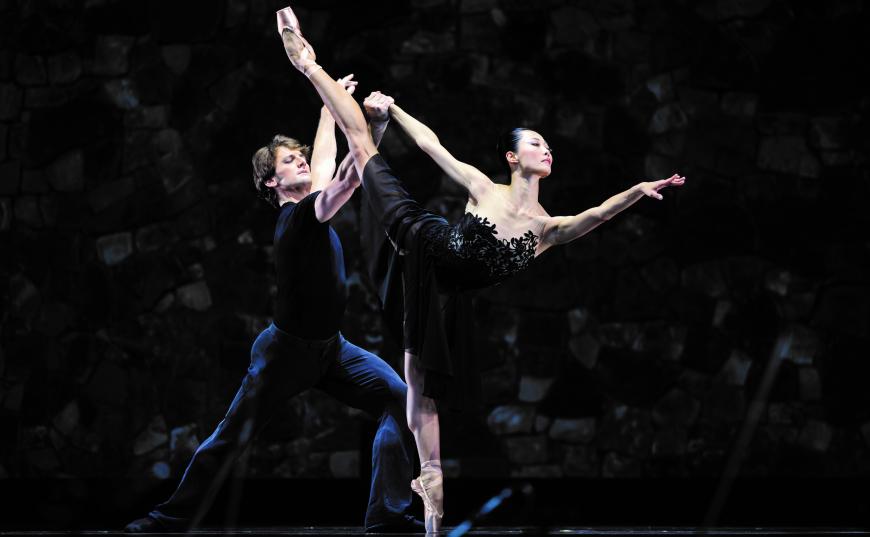
Friday and Saturday nights belonged to San Francisco Ballet, reprising last summer’s appearance at Frost, dancing beneath a luxuriant blue, cloud-streaked sky and a glowing moon that only nature could provide. Music Director Martin West conducted the orchestra through 7 for Eight, set to Bach’s keyboard concertos, with Mungunchimeg Buriad exquisitely at the piano here, as well as in the Chopin works making up Jerome Robbins’s In the Night, the next ballet.
This is a time of changes, highlighted by retiring Artistic Director Helgi Tomasson’s appearance before the show and by shifts in the company roster, including Jasmine Jimison of Palo Alto. Newly promoted to soloist, she made a promising debut in Tomasson’s 7 for Eight, displaying the speed, buoyancy, and fine epaulement this delightful work demands. But really, the whole cast was on its game, the rules for its seven parts being something like move fast and don’t break things — and astonish with your elevation, your elegance, your grace, and your sense of fun.
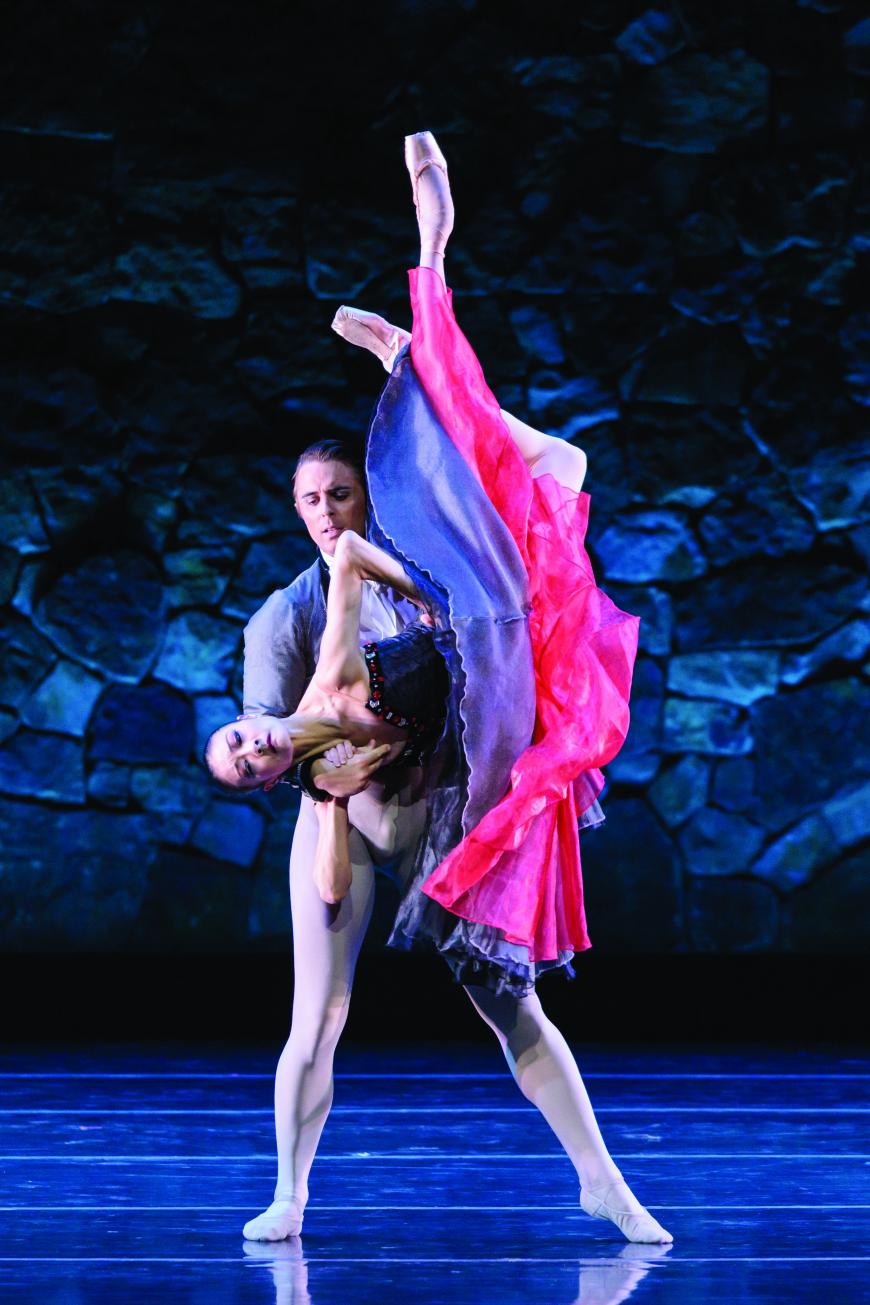
In the Night, Robbins’s anatomization of the love lives of three couples, was superb. The young lovers, danced by Elizabeth Powell and Joseph Walsh, conveyed a sense of surprise at how much they enjoyed being together. The more mature, more mutually accommodating pair, Sasha Mukhamedov and Tiit Helimets, were the embodiment of elegance and restraint, their bodies seasoned with occasional expressions of frustration and respect. Capping the whole thing off, Yuan Yuan Tan and Luke Ingham, whose impassioned relationship has reached the breaking point, danced out their woes and then, miraculously, made up. She bent, and they didn’t break — which Robbins’s colleague George Balanchine disagreed with, but then, he was married five times. The emotion through the couple’s journey was breathtaking, and it seemed to this viewer that Tan’s character’s decision to yield required more courage than her mate’s decision to stand his ground.
Blake Works, which, like the other ballets mentioned here, I’ve recently reviewed for SFCV, completed the program. Whether it was the venue or the evening or the presence of more young people than usual in the audience, this time it seemed to embody a lovelier perspective than on first viewing: more community, more of a sense of joy, and more poignancy, too.
The stager, Ayman Harper, did a marvelous job with William Forsythe’s ballet, set to the songs of James Blake. Too, the audio was easier to hear than in the War Memorial Opera House. This one, as I wrote before, is a must-see and perhaps even a voice for an entire ballet era. It’s a full-company work, it’s full of company standouts, and the leading figure, or so it seemed, was Sasha De Sola, who has stepped up to new company prominence. She has it all, and she shares it. Other standouts: Julia Rowe, Joseph Walsh, Jennifer Stahl, Wei Wang, and Max Cauthorn.


